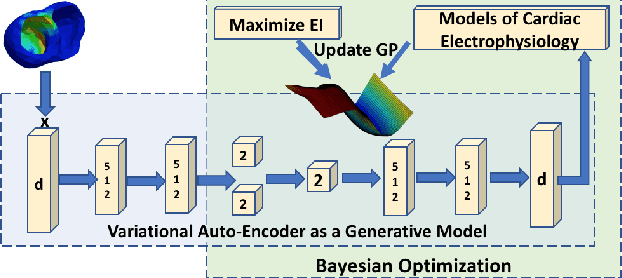High-dimensional Bayesian Optimization of Personalized Cardiac Model Parameters via an Embedded Generative Model
Paper and Code
May 15, 2020



The estimation of patient-specific tissue properties in the form of model parameters is important for personalized physiological models. However, these tissue properties are spatially varying across the underlying anatomical model, presenting a significance challenge of high-dimensional (HD) optimization at the presence of limited measurement data. A common solution to reduce the dimension of the parameter space is to explicitly partition the anatomical mesh, either into a fixed small number of segments or a multi-scale hierarchy. This anatomy-based reduction of parameter space presents a fundamental bottleneck to parameter estimation, resulting in solutions that are either too low in resolution to reflect tissue heterogeneity, or too high in dimension to be reliably estimated within feasible computation. In this paper, we present a novel concept that embeds a generative variational auto-encoder (VAE) into the objective function of Bayesian optimization, providing an implicit low-dimensional (LD) search space that represents the generative code of the HD spatially-varying tissue properties. In addition, the VAE-encoded knowledge about the generative code is further used to guide the exploration of the search space. The presented method is applied to estimating tissue excitability in a cardiac electrophysiological model. Synthetic and real-data experiments demonstrate its ability to improve the accuracy of parameter estimation with more than 10x gain in efficiency.
 Add to Chrome
Add to Chrome Add to Firefox
Add to Firefox Add to Edge
Add to Edge